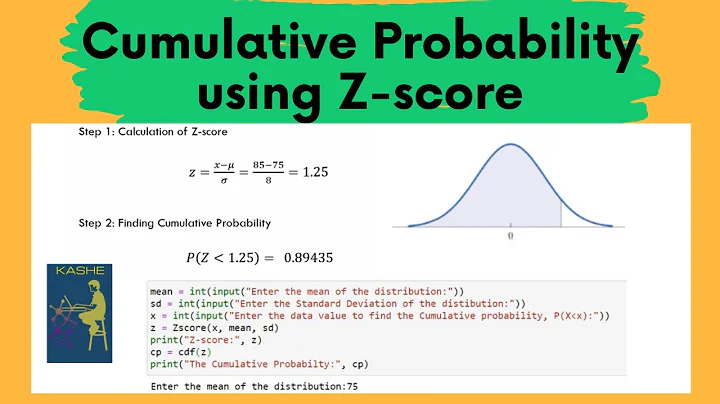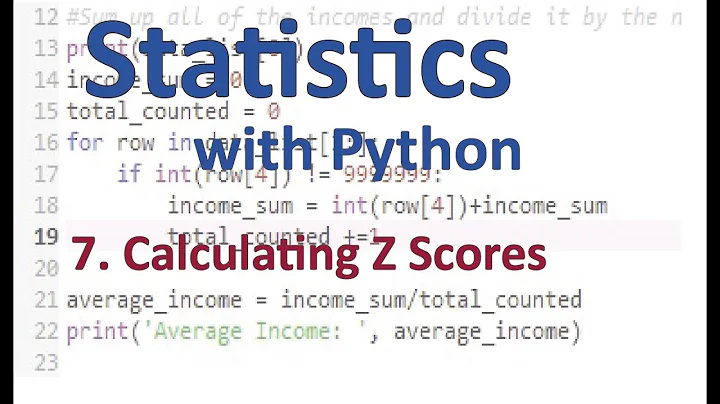compute z-score with the function in scipy and numpy
18,972
Since nobody has added an answer and it seems to be correct, I will post Alex Riley's answer here.
Try this to get the same result for the 2D array.
from scipy import stats
stats.zscore(a, axis=None)
Related videos on Youtube
Author by
iTS
Updated on September 15, 2022Comments
-
iTS over 1 year
I try to use the stats.zscore() in scipy and have the following results which confuse me.
Suppose I have an array and I compute the z-score in 2 different ways:
>>> a = np.array([[1.0, 2.0], [3.0, 4.0]]) >>> a array([[ 1., 2.], [ 3., 4.]])First result:
>>> stats.zscore(a) array([[-1., -1.], [ 1., 1.]])Second result:
>>> mean = np.mean(a) >>> mean 2.5 >>> std = np.std(a) >>> std 1.1180339887498949 >>> b = (a-mean)/std >>> b array([[-1.34164079, -0.4472136 ], [ 0.4472136 , 1.34164079]])The above results are different, but if I use another array,
>>> c = np.array([ 0.7972, 0.0767, 0.4383, 0.7866, 0.8091, 0.1954, 0.6307, 0.6599, 0.1065, 0.0508]) >>> c array([ 0.7972, 0.0767, 0.4383, 0.7866, 0.8091, 0.1954, 0.6307, 0.6599, 0.1065, 0.0508])First result:
>>> stats.zscore(c) array([ 1.12724554, -1.2469956 , -0.05542642, 1.09231569, 1.16645923, -0.8558472 , 0.57858329, 0.67480514, -1.14879659, -1.33234306])Second result:
>>> mean = np.mean(c) >>> mean 0.45511999999999986 >>> std = np.std(c) >>> std 0.30346538451691657 >>> b = (c-mean)/std >>> b array([ 1.12724554, -1.2469956 , -0.05542642, 1.09231569, 1.16645923, -0.8558472 , 0.57858329, 0.67480514, -1.14879659, -1.33234306])So when I use another array, the results become the same. Can someone help me understand what I did wrong in this? Thanks!
-
Warren Weckesser@Alex: That looks like an answer. :)
-
 Alex Riley
Alex Rileystats.zscoreworks along axis 0 by default (it does not flatten the entire array like the mean and std functions). It's behaviour is essentially(a - a.mean(axis=0)) / a.std(axis=0). -
 Alex Riley(*its behaviour - pardon my grammar) - try
Alex Riley(*its behaviour - pardon my grammar) - trystats.zscore(a, axis=None)to get the same result as NumPy for the 2D array.
-








